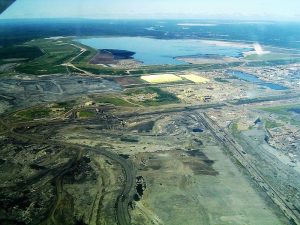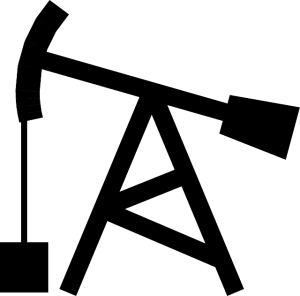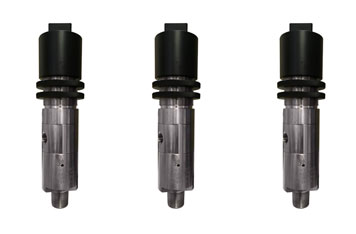ALBERTA’S CARBON TAX AND WHAT IT MEANS FOR YOU
Alberta and Carbon
Albertan’s heavily rely on coal as a major source of energy, be it for transportation, heating, or gas. The burning of carbon is linked to the emission of greenhouse gases and carbon pollution. Since Alberta has the highest coal pollution out of all the provinces in Canada, the province’s government is always looking for ways to improve in a way that benefits all citizens.
Why a Carbon Tax and How Will it Work?
Considering that Alberta produces the most pollution in Canada, the government has implemented the carbon tax with the goal of reducing emissions. Ultimately, the tax will encourage Alberta’s families to minimize carbon pollution. The carbon tax will be applied to transportation and heating systems which includes diesel, gasoline, natural gas and propane (it does not apply to electricity).
Carbon Levy Rates
You may be asking yourself, how much will I be charged? and how is this calculated?
Well, at the beginning of 2017, a carbon tax was implemented at $20 per tonne on carbon dioxide emission. As of January 1, 2018, it increased to $30 per tonne.
The Breakdown
- Gasoline: Increase from $4.49 per litre to $6.73 per litre
total increase: $2.24/L - Diesel: Increase from $5.35 to $8.03
total increase: $2.68/L - Natural Gas: Increase from $1.01/GJ to $1.57/GJ
total increase: $0.50 per gigajoule (GJ) - Propane: Increase from $3.08 to $4.62
total increase: $1.54/L
Where is My Money Going?
The revenue collected from initiatives to reduce emissions will be going to pay investments that support the transition to this new, fuel efficient, low emission economy. This includes rebates that protect low and middle-income families. It has been projected that 60% of households will get a full or partial rebate. Other places where your money will go to:
- Renewable energy projects and electricity transition projects
- Industrial and consumer energy efficiency programs
- Indigenous climate leadership initiatives
- Environmentally efficient transit and infrastructure projects
- Rebates!
What a Carbon Tax Means for the Oil & Gas Industry
Plainsman is committed to improving production and becoming as efficient and waste free as possible. What the carbon tax implies for industries like the Oil and Gas production is that companies who use best practices and invest in energy efficient facilities will be rewarded. On the other hand, companies who do not follow best practices will face higher charges due to the fees implemented. For instance, if a company exceeds the set amount of emissions will have to pay $30/ tonne of emission over the limit.
In this sense, Alberta will be looking to being more competitive and encouraging its companies to follow in these practices. This restructuring is called the Carbon Competitiveness Incentive and will replace the regulations currently set under the Specified Gas Emitters Regulation.
At Plainsman we are committed to becoming sustainable and as waste free as possible. These new regulations will contribute to big oil companies like us, by creating the investment and structure needed for us to move towards these efforts.
Learn more about our products today http://plainsmanmfg.com/products/.
What is Natural Gas?
Introduction
Natural gas is a combination of gases naturally found below the surface and in Earth’s atmosphere that are rich in hydrocarbons. The colorless and odorless gas is mostly comprised of methane, one of the major organic compounds on Earth, which consists of one carbon and four hydrogen atoms. In addition to methane, there are also small traces of combustible hydrocarbon gas liquids and nonhydrocarbon gases. Humans mainly utilize natural gas as a source of energy for heating methods like cooking and electricity generation.
Origin
Natural gas is often referred to as ‘fossil fuel’ because it was formed hundreds of millions of years ago from organic matter, like plankton, and other life forms. The gas is usually found in rock formations below the surface of the Earth, with Petroleum. Natural gas reserves are buried deep inside the Earth, close to other hydrocarbons beds like coal and crude oil.
Millions of year ago, plant and animal remain decayed and built up in thick layers, in some cases, mixed with sand and silt. With the help of pressure and heat, some of the organic material turned into coal, while some turned into Petroleum and others into natural gas. In certain places, however, the natural gas transferred into large cracks and spaces between layers of rock.
Natural Gas Extraction
To extract the natural gas, large drills will pierce the Earth and unlock the natural gas from its underground reserves. Then, pipelines will take the weightless natural gas and transfer it to the end user.
It is important to note that natural gas is never used in its pure purest form, it instead goes through processing and is converted into cleaner fuel for consumption. By-products like propane and ethane are also extracted during the processing of natural gas.
In other areas, natural gas will usually appear in the tiny spaces within some formations of sedimentary rock, often referred to as ‘shale gas.’ When natural gas appears in the form of coal deposits, it is referred to as ‘coalbed methane.’
Getting Natural Gas in Canada
To locate natural gases, geologists will first begin to study earth’s structure and behavioral processes. Then, they will locate the types or rock that they feel are likely to contain natural gas deposits. Most times, some of these areas are on land while others are offshore and deep below the ocean floor.
In regard to the delivery process, natural gas is usually transported in pipelines and it is particularly used for heating methods like fueling hot water and appliances.
Canada is the fifth-largest natural gas producer in the world and has recommended natural gas reserves to continue meeting the demand for 300 years, according to the Canadian Association of Petroleum Producers. In addition, roughly one-third of Canada’s energy needs are actually met by natural gas. One thing that’s great about natural gas is that it burns cleaner than other fuels, it is more transportable, and there is a large abundance of it in Canada, with deposits in almost every province and territory.
WHAT IS HEAVY OIL?
What is Heavy Oil?
Simply defined, heavy oil is liquid petroleum of less than 20° API gravity. It has a high viscosity which keeps it from easily flowing. Its difficult transportation is also due to the lower ratio of hydrogen to carbon as well as the presence of other minerals.
- The main difference between light and heavy oil is the density and hence, its ability to flow.
Heavy oil is asphaltic, dense, and contains very large molecules of sulfur, resins, and metals found within oil, adding to its heavy density. Also, it can sometimes contain waxes and carbon residues which should be removed before refining oil. It is crucial to understand heavy oil’s properties to develop and operate efficient processes to extract oil from the ground.
Canada is one of the leading countries in the production of heavy oil. Therefore, there are different methods implemented across the country for the extraction of heavy oil.
The most common methods are:
- Cold heavy oil production with sand
- Steam assisted gravity drainage
- Steam injection
- Vapor extraction
- Toe-to-Heel air injection
- Open-pit mining
- In-SITU Operations
At Plainsman, we manufacture and distribute products for oilfield production, pipeline maintenance, construction and gas and water distribution. Check our products & services or learn more by calling our experts today 1-877-448-0586
Where does heavy oil come from?
Like most forms of petroleum, heavy oil originated from plant life millions of years ago. Formation of oil occurs when plants and organisms die and decompose. Their sediments are buried and compressed onto the bottom of the sea. Throughout time, weather conditions, the pressure of rocks as well as heat will take the carbohydrates and turn them into hydrocarbons. Then, these reservoirs of oil are most likely found in porous rocks like sandstone and limestone due to these rock’s characteristic permeability.
Canada holds the most extensive areas where oil can be found in the sand and rock commonly referred to as the Oil Sands. Oil sands are a kind of heavy oil and play a big role in our everyday Canadian economy. They contain mixtures of sand, water, and clay known as bitumen.
Heavy Oil Pros and Cons
Currently, heavy oil plays a big role as a large contributor to the world’s energy, specially as new methods for renewable energy are being sought. However, new technologies are looking to replace our existing energy sources. For instance, ethanol, and hydrogen will more easily replace oil, similarly to how oil replaced coal. You can read more about coal and carbon in our blog about the end to Alberta’s carbon taxes by following this link: http://plainsmanmfg.com/blog/albertas-carbon-tax-and-what-it-means-for-you/
Furthermore, Canada’s economy heavily relies on the production of heavy oils, seeing as the region, along with Venezuela, has the largest oil sand reserves in the world.
- Advantage: The energy density that creates an alternative source for transportation fuel and other products like plastics.
- Disadvantage: These processes pose environmental obstacles such as greenhouse gas emissions.
At Plainsman manufacturing we are committed to finding the best ways to produce energy and reduce harmful gas emissions. We deliver superior quality products that meet our customers expectations in a timely, waste-free manner.
What Is Hydraulic Fracturing
‘Unconventional’ Oil & Gas Production
Hydraulic fracturing (also known as ‘fracking’) is the process of pumping a water-based solution down into the ground to fracture the rock within the earth. Fracturing the rock beneath the earth releases valuable compounds that are held within those rocks, such as crude oil and natural gas.
Wells are drilled vertically hundreds to thousands of feet below the earth’s surface, they can then be extended by drilling thousands of feet further horizontally. Once the wells have been drilled, a solution made up of water, proppants such as sand or man-made ceramic materials, and other chemicals are pumped down the wells at a high pressure to blast and fracture the rock below. Proppants are small solid materials such as sand or ceramics that are added to the water-based solution in order to keep induced fractures open after the pressure blasting has finished.
Once the fracturing process has been completed, the solution rises back to the surface along with any other compounds released from the fracturing process due to the internal pressure of the rock beneath the earth. This solution is known as the ‘flowback’, it is then collected and stored so that it can be treated, and the useful Oil and Natural Gas can be separated. The solution is often then recycled and used again for more fracturing.
Hydraulic fracturing is a form of ‘unconventional’ oil and gas production. Until recently, unconventional wells were not economically viable to produce from, since the oil and gas are highly dispersed within the rock instead of being concentrated in one underground location. However, the technological advancements in extraction practices such as hydraulic fracturing have made these wells profitable to produce from, vastly increasing the global supply.
What Are The Canadian Oil Sands

And Their Importance To Canada
Oil sands are a naturally occurring geological phenomenon, made up of a mixture of sand, clay, water, and bitumen. Oil sands can be found in many places around the world, such as Venezuela, the United States, Russia, and of course, Canada.
The Canadian oil sands are located in northeastern Alberta, Canada. Officially called the ‘Athabasca Oil Sands’ they are the worlds largest single deposit of crude bitumen containing roughly 1.7 trillion barrels and contribute to Canada’s total oil reserves, being the third largest in the world after Saudi Arabia, and Venezuela.
They were formed millions of years ago as a result of the formation of the Canadian Rocky Mountains. The Pacific tectonic plate overthrust on the North American tectonic plate, the collision of these two tectonic plates compressed the Albertan plains and raised the Canadian Rockies creating the famous mountain range we know today. As the Albertan plains were compressed by the Pacific plate, sedimentary rock and organic matter were buried deep underground. This created high amounts of pressure and heat underground truing the organic matter into the bitumen found in the oil sands today.
Extraction of the bitumen in the oil sands happens via two main processes. When the bitumen is buried deep within the ground, in-situ extraction is used, which involves using specialized ‘steam-assisted gravity drainage’. In contrast, when the bitumen is located closer to the surface, open pit mining methods are used.
Due to the large reserves of the oil sands in Alberta, the energy industry is extremely important to the province generating revenues of $111.7 billion in 2014.
The Four Main Types Of Crude Oil

What is Crude Oil?
Crude Oil is a liquid found within the earth compromised of hydrocarbons, organic compounds and small amounts of sediments and metal. Within the industry, people talk about ‘Crude Oil’ as if it is just one standard liquid form. However, this is far from the truth.
Crude Oil extracted from the ground in its natural unrefined state varies considerably in its density and consistency, from a very thin and volatile liquid to an extremely thick, semi-solid heavy weight oil. Furthermore, the colour of Crude Oil extracted from the ground can range substantially, from a light golden yellow to a deep dark black.
As we have now established, ‘Crude Oil’ is a term used to describe many different types of raw oil extracted from the ground. Within the industry, we categorize these different types into four main categories based on three factors: their viscosity, volatility, and toxicity.
Viscosity refers to the oils ability to flow. Higher viscosity oils do not flow as easily and therefore take more energy and effort to pump from the ground.
Volatility describes how quickly and easily the oil evaporates into the air. Higher volatility oils need additional processes to control their environments during extraction to ensure that as little oil as possible is lost.
Toxicity refers to how poisonous and harmful the oil is to the environment, wildlife, and humans during the extraction and refinement process. When oil spills do occasionally occur, each oil poses different challenges and priorities during the cleanup.
With that said, the four main types of Crude Oil are:
- Very light oils – these include: Jet Fuel, Gasoline, Kerosene, Petroleum Ether, Petroleum Spirit, and Petroleum Naphtha. They tend to be very volatile, evaporating within a few days which in turn evaporates their toxicity levels.
- Light oils – These include Grade 1 and Grade 2 Fuel Oils, Diesel Fuel Oils as well as Most Domestic Fuel Oils. They are both moderately volatile and toxic.
- Medium oils – These are the most common types of Crude Oil. They generally have low volatility and a higher viscosity than the light oils which leads to higher toxicity and a greater environmental impact during cleanups.
- Heavy fuel oils – These include the heaviest Grade 3,4,5 and 6 Fuel Oils along with Heavy Marine Fuels. These are the most viscous and least volatile Crude Oils as well as the most toxic.
The Difference Between Crude Oil & Natural Gas
And What They’re Used For
 Crude Oil and Natural Gas are both fossil fuels formed from the remains of dead animal and plants over the course of thousands of years. They both are used as a heat source, produce energy, and are both made up of different hydrocarbons which are compounds of both hydrogen and carbon.
Crude Oil and Natural Gas are both fossil fuels formed from the remains of dead animal and plants over the course of thousands of years. They both are used as a heat source, produce energy, and are both made up of different hydrocarbons which are compounds of both hydrogen and carbon.
So, what’s the difference between them?
The biggest difference between Crude Oil and Natural Gas is their molecular makeup.
Crude Oil is comprised of a wide and diverse selection of complex hydrocarbons. Because of its unique and complex makeup, Crude Oil comes in many different forms and its viscosity and volatility can vary widely. Due to each deposit of Crude Oil having its own unique mix of chemicals, it requires extensive refining for it to be commercially used.
Natural Gas is also made up of a mixture of different hydrocarbons, such as gasses like ethane, propane, butane, and pentane. However, the greatest benefit of natural gas is that its main component (roughly 80%) is the relatively simple hydrocarbon methane. This simple structure makes natural gas much easier to refine for commercial use.
Finally, they differ in their uses and consumption.
After refinement Crude Oil is generally used for the following:
- Gasoline
- Heating Oil & Diesel Fuels
- Other Products (such as plastics)
- Jet Fuel
- Propane
- Residential Fuel Oil
- Asphalt
Whereas Natural Gas is used for:
- Electrical Power Generation
- Residential Heating
- Commercial Heating
- Industrial Production

Plainsman is 50!
Thank you all for joining us for our 50th anniversary celebration that we held during our 16th annual Turkey Fry and open house. We appreciate everyone’s support!

Plainsman HiLo-Matic™ Stick Pilot

The Plainsman Stick Pilot adds to our Safety Shutdown Systems product line as the fourth product we offer for Emergency Shutdown Systems. The Plainsman Stick Pilot can cover pressure variance in a emergency shutdown system from 10 to 10,000psi and has interchangeable piston arrangements to achieve different pressure ranges.
To learn more about our product click here.

Plainsman’s Commitment to Operational Excellence
All departments at Plainsman Manufacturing are open to new ideas; more importantly, on-going learning. That is why we had our V.P. of Operations, Mark Lea-Wilson, visit Ontario-based manufacturing facilities to find out how Plainsman can improve it’s internal processes.
To read the full article click here

